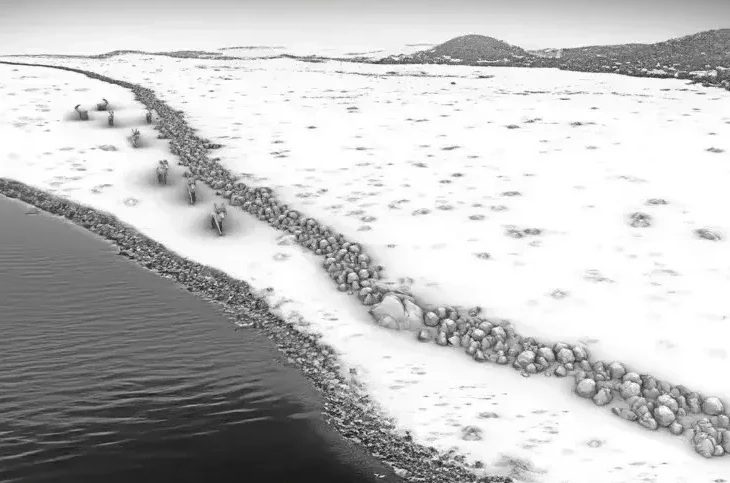Mega-Structure Built by Ice Age Hunters Found in the Baltic Sea

In 2021, a group of scientists stumbled upon an unusual discovery beneath the Baltic Sea – a peculiar arrangement of stones, approximately 1,500 in number, neatly aligned just 21 meters below the surface. What caught their attention was the precision of the arrangement, prompting them to consider a human-made origin. The researchers, hailing from various fields, now propose that Stone Age individuals might have constructed this structure around 11,000 years ago for the purpose of hunting reindeer.
This finding marks a significant milestone as the first identification of a Stone Age hunting structure in the Baltic Sea region. Originally, a team from Kiel University had set out to investigate manganese crusts on the seafloor near the Pomeranian town of Rerik. However, their focus took an unexpected turn when they stumbled upon this enigmatic row of stones, leading them to report their discovery to the Mecklenburg-Vorpommern State Agency for Culture and Monument Preservation.
The current depth of the Baltic Sea at this location, approximately 21 meters, indicates that the stone wall predates substantial increases in sea levels that occurred around 8,500 years ago, following the last ice age. The researchers speculate that the wall likely extended to a bog or lake before the landscape submerged, evident in a basin-shaped depression underwater.
Collaborating institutions, including the Leibniz Institute for Baltic Sea Research Warnemünde and the German Aerospace Center, conducted a comprehensive study employing modern geophysical methods to create a detailed 3D model of the wall and reconstruct the ancient landscape. Sediment samples and underwater exploration by research divers from Rostock and Kiel universities played a crucial role in narrowing down the construction period.
Lead researcher Jacob Geersen dismisses natural or recent explanations for the stone wall’s origin, emphasizing the methodical arrangement of small stones connecting large boulders. The researchers propose that the wall served as a hunting aid, directing reindeer into a bottleneck for easier capture by Stone Age hunters.
Drawing comparisons with similar structures in Lake Huron, Michigan, suggests a global precedent for such hunting structures. The Baltic Sea discovery, dating back to around 11,000 years ago, makes it the oldest human-made structure found in the region.
Further investigations are underway, employing advanced sonar devices and diving campaigns to scrutinize the stone wall and its surroundings for archaeological evidence. Luminescence dating will aid in determining the wall’s construction date, while researchers aim to reconstruct the ancient landscape in greater detail.